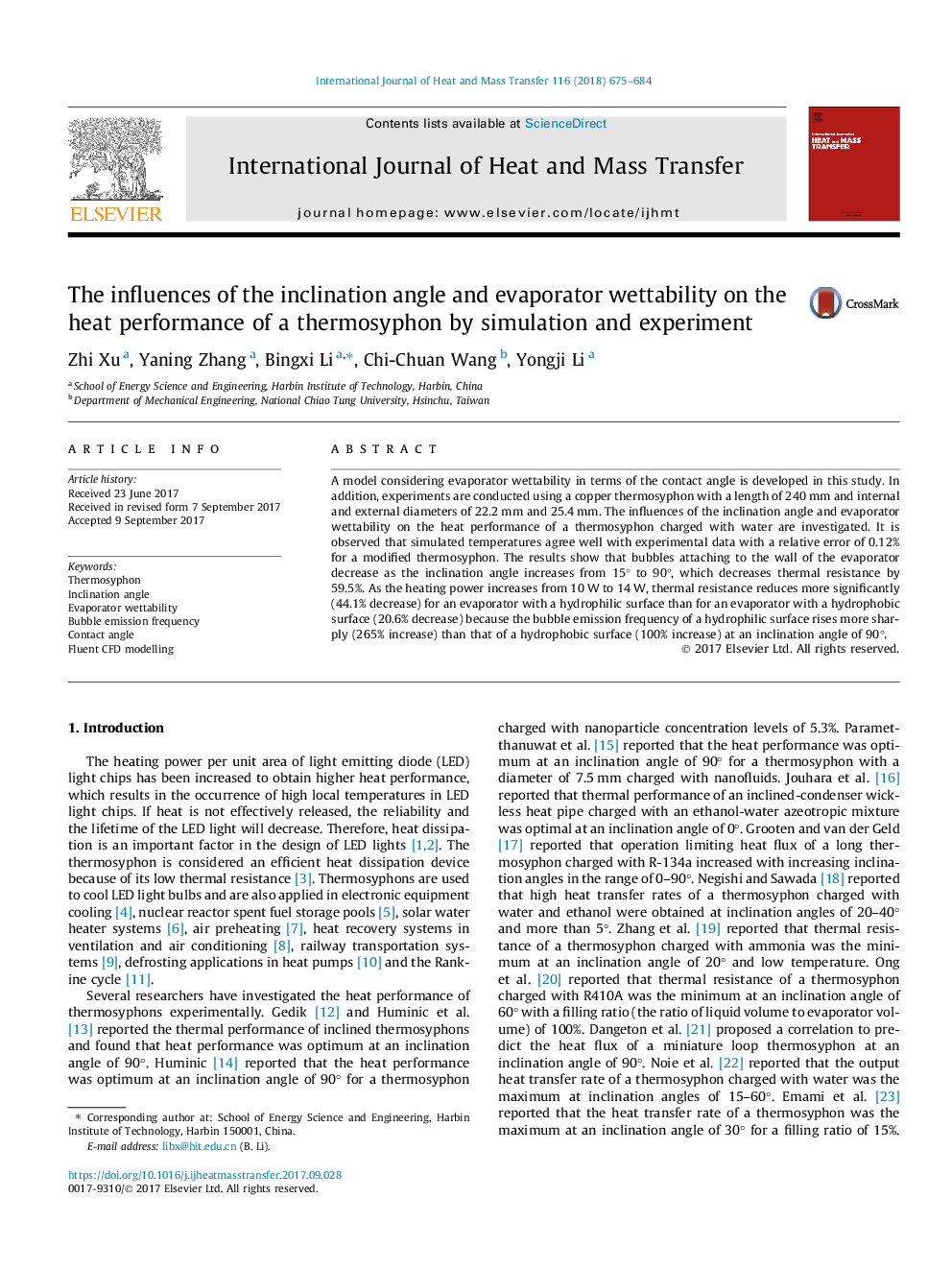| Article ID | Journal | Published Year | Pages | File Type |
|---|---|---|---|---|
| 4993790 | International Journal of Heat and Mass Transfer | 2018 | 10 Pages |
Abstract
A model considering evaporator wettability in terms of the contact angle is developed in this study. In addition, experiments are conducted using a copper thermosyphon with a length of 240 mm and internal and external diameters of 22.2 mm and 25.4 mm. The influences of the inclination angle and evaporator wettability on the heat performance of a thermosyphon charged with water are investigated. It is observed that simulated temperatures agree well with experimental data with a relative error of 0.12% for a modified thermosyphon. The results show that bubbles attaching to the wall of the evaporator decrease as the inclination angle increases from 15° to 90°, which decreases thermal resistance by 59.5%. As the heating power increases from 10 W to 14 W, thermal resistance reduces more significantly (44.1% decrease) for an evaporator with a hydrophilic surface than for an evaporator with a hydrophobic surface (20.6% decrease) because the bubble emission frequency of a hydrophilic surface rises more sharply (265% increase) than that of a hydrophobic surface (100% increase) at an inclination angle of 90°.
Related Topics
Physical Sciences and Engineering
Chemical Engineering
Fluid Flow and Transfer Processes
Authors
Zhi Xu, Yaning Zhang, Bingxi Li, Chi-Chuan Wang, Yongji Li,
